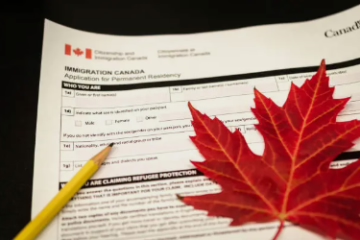Table of contents
In the complex landscape of Canadian immigration, the Procedural Fairness Letter (PFL) plays a crucial role in ensuring transparency and fairness in visa applications. Understanding what a PFL is, its importance in the application process, and how to respond effectively can significantly impact the outcome of a visa application. This article delves into these aspects to provide a comprehensive guide for applicants navigating the Canadian visa system.
What is a Procedural Fairness Letter (PFL)?
A Procedural Fairness Letter (PFL) is a formal communication issued by Canadian immigration authorities when there are concerns or potential issues with a visa application. Essentially, it serves as a notice to the applicant that their application may be refused based on certain findings or lack of information. The PFL outlines the specific concerns that have been identified, providing the applicant with an opportunity to address these issues before a final decision is made. This mechanism is rooted in the principles of natural justice, ensuring that applicants are aware of the concerns and have a chance to respond.
The PFL can cover a range of issues, such as discrepancies in the information provided, doubts about the authenticity of documents, or questions regarding the applicant’s eligibility. The letter is typically detailed, specifying the exact nature of the concerns and often citing relevant sections of the law or policy. Understanding the content of a PFL is crucial, as it guides the applicant on what needs to be addressed to mitigate the risk of application refusal.
Receiving a PFL can be daunting for applicants, as it indicates potential hurdles in their immigration journey. However, it also represents an opportunity to clarify misunderstandings or provide additional evidence to support their application. It is important for applicants to approach the PFL with a clear strategy, ensuring they comprehensively address the concerns raised by the immigration authorities.
Importance of PFL in Canadian Visa Applications
The issuance of a Procedural Fairness Letter is a pivotal moment in the Canadian visa application process, underscoring the importance of procedural fairness in administrative decision-making. It ensures that applicants are not subject to arbitrary decisions without having the opportunity to present their case or rectify any misunderstandings. By providing a chance to respond, the PFL embodies the principles of transparency and accountability, which are foundational to the Canadian immigration system.
For applicants, a PFL represents both a challenge and an opportunity. It highlights potential weaknesses in their application that need to be addressed, offering a final chance to strengthen their case. Successfully responding to a PFL can turn the tide in favor of the applicant, potentially changing a negative outcome into a positive one. This process underscores the importance of vigilance and thoroughness in preparing visa applications from the outset.
Moreover, the PFL process reflects the commitment of Canadian immigration authorities to uphold fairness and justice. By allowing applicants to respond to concerns, the system ensures that decisions are made based on a complete and accurate understanding of the applicant’s circumstances. This commitment to fairness helps maintain trust in the immigration system, reinforcing its integrity and reliability for applicants worldwide.
Responding Effectively to a PFL: Key Steps
Responding effectively to a Procedural Fairness Letter requires a strategic approach and careful attention to detail. The first step is to thoroughly understand the concerns outlined in the letter. Applicants should carefully review the document, identifying each issue raised and the corresponding evidence or documentation required to address it. This understanding forms the foundation of a well-structured response.
Once the concerns are clearly understood, the next step is to gather the necessary evidence and documentation to address them. This may involve obtaining additional documents, providing explanations for discrepancies, or clarifying any misunderstandings. It is crucial to ensure that all evidence is relevant, credible, and directly addresses the issues raised in the PFL. Applicants should also be mindful of deadlines, as failing to respond within the specified timeframe can result in a negative decision.
Finally, crafting a comprehensive and well-organized response is essential. The response should be clear, concise, and directly address each concern raised in the PFL. It is advisable to seek professional assistance, such as consulting with an immigration lawyer or consultant, to ensure the response is thorough and effective. A well-prepared response not only addresses the concerns but also demonstrates the applicant’s commitment to complying with immigration regulations and procedures.
Understanding and effectively responding to a Procedural Fairness Letter is a critical aspect of the Canadian visa application process. By comprehending the nature and importance of a PFL, applicants can better navigate the challenges it presents and seize the opportunity to strengthen their case. With careful preparation and a strategic approach, responding to a PFL can significantly enhance the likelihood of a favorable outcome, paving the way for a successful immigration journey to Canada.
FAQs About Procedural Fairness Letter (PFL) in Canadian Immigration
What is a Procedural Fairness Letter (PFL)?
A Procedural Fairness Letter (PFL) is a formal notice issued by Canadian immigration authorities highlighting concerns or potential issues with a visa application. It allows the applicant an opportunity to respond before a final decision is made.
Why do Canadian immigration authorities issue a PFL?
Authorities issue a PFL to ensure transparency and fairness by informing applicants of concerns about their application and giving them a chance to address those issues.
What concerns are typically highlighted in a PFL?
A PFL can address issues such as document discrepancies, doubts about authenticity, eligibility concerns, or incomplete information in a visa application.
How should I respond to a PFL?
To respond to a PFL, carefully review the concerns, gather relevant and credible evidence, and submit a clear and concise response within the specified deadline.
What happens if I ignore a Procedural Fairness Letter?
Ignoring a PFL or failing to respond within the deadline can lead to the refusal of your visa application, as the concerns raised will remain unaddressed.
Can a PFL impact my immigration outcome?
Yes, responding effectively to a PFL can significantly influence the outcome of your visa application, potentially turning a negative decision into a positive one.
What is the deadline for responding to a PFL?
The deadline for responding to a PFL is specified in the letter itself. It is crucial to adhere to this timeframe to avoid application refusal.
Can I get professional help to respond to a PFL?
Yes, seeking assistance from an immigration lawyer or consultant can help you craft a thorough and effective response to a PFL.
Does receiving a PFL mean my application will be refused?
No, receiving a PFL does not guarantee refusal. It indicates concerns that need addressing. A strong response can improve your chances of success.
Why is procedural fairness important in immigration?
Procedural fairness ensures that applicants are treated justly, have a chance to address concerns, and are not subjected to arbitrary decisions, maintaining the integrity of the immigration system.



0 Comments